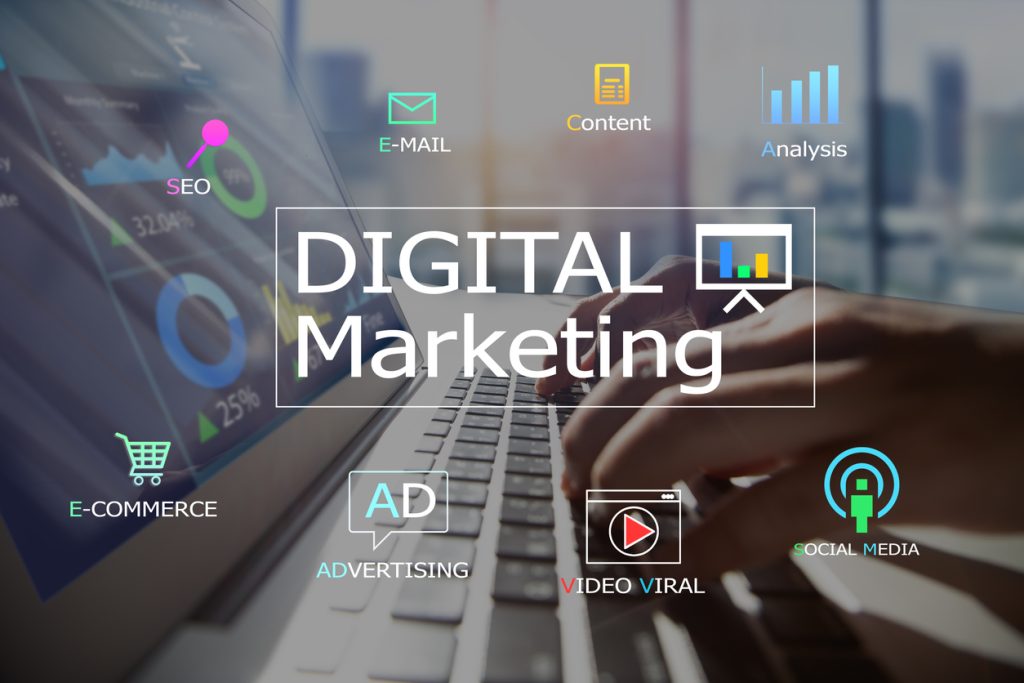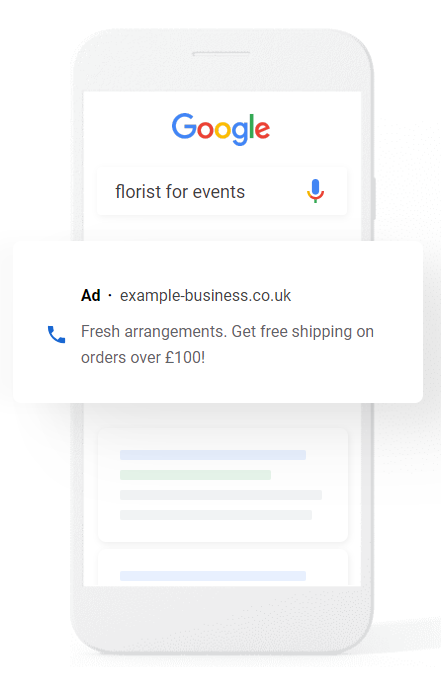
You may need a crystal ball to predict the future of digital marketing as it is constantly evolving to adapt to the ever-changing needs of customers and brands.
Today's trends, technologies, and innovations shape tomorrow's digital marketing, and knowing the next big trends will help you stay ahead of the curve.
We want to share with you the knowledge we’ve gained over our last 20 years in business. In this article, the SQ Digital experts take a closer look at what the future holds for each digital marketing discipline, including SEO, Content, PPC and social media.
Content Marketing
Content marketing will continue to be essential for promoting your business online. The tools and format used to create, publish and share content, on the other hand, are likely to change.
Video marketing has been on the radar of every content marketing professional for years, so it is not likely to be the NEXT big trend, but it will still play a crucial role in digital marketing:
- 81% of businesses currently use video as a marketing tool - according to Invespcro, Conversion Rate Optimisation Experts.
- 90% believe that video is crucial for the success of their online business.
A video is a versatile form of content and easy to share. It’s also a great option for companies looking to entertain, educate and engage their audience.
As Kate Martin, our Lead Digital Marketing Executive says:
“It's now becoming necessary that marketing strategies look at incorporating interactive content in their wider content marketing plans. It is the best way to increase visitors to your website and encourage engagement – especially when posted on social media.
Watching a video is easier than digesting paragraphs of text and therefore a lot more convenient – especially for those using mobiles or tablets.”
Digital PR
It’s crucial to build and foster relationships with industry experts, and we can help our clients achieve that through digital PR. With digital PR and outreach, you can:
- Boost your brand awareness and exposure
- Improve SEO rankings
- Increase website traffic
- Target a wider audience
- Create social engagement
- And so much more
At the moment, a big trend to look out for is an increased reliance on voice search in digital PR. SQ Digital is making an active effort to optimise voice search, which includes concise and easy-to-read content. In addition, we make sure to use data-driven topics and subheadings and answer questions succinctly.
Matt Hartley, Senior Content Marketing Executive, has this to say about voice search in digital PR:
“Voice search is growing. Think about all the people who have Alexa and Google Home devices in their homes now. It's our job as PR specialists to capture some of this traffic by optimising our assets to be searchable from a voice format point of view.”
The industry will also turn to more video and interactive-based content, even when it comes to digital PR, so digital marketers should keep this in mind. Matt believes that “whilst traditional articles are certainly not dead (because we’ll optimise them for voice search), interactive assets and videos are already on the rise and look set to stay. This is mainly down to users wanting to have something to interact with when reading an article these days.”
SEO
SQ Digital started as an SEO agency over 20 years ago, so we understand just how important search engine optimisation really is. Our insight is rooted in the two decades of experience we have in the business, as well as the SEO knowledge we’ve built up over time.
And, right now, we see two big trends in SEO: content and structured data mark-up.
Google’s recent algorithms mean that both intent and understanding the drive behind searches are crucial. Content creators will have to take this into account, which will lead to higher-quality sites in general, and people can find information quicker.
Structured data mark-up is mark-up language (such as Schema) that signals specific content types on a page to Google and other search engines. This allows the search engines to facilitate rich snippets with a higher click-through rate and provide better user experiences based on search queries.
Lizzy Goldsbrough, Senior SEO Executive, says that Google can tell when a search term is for a product.
“It will, therefore, display price rich snippets in the search results as it has gathered the information to know that this serves a better user experience than when prices were not shown.
“But the data behind these decisions come down to psychology and user behaviour. Understanding the human mind as well as the way a machine, such as an algorithm, works, is key to the future of SEO.”
When it comes to content, we must understand the psychology behind search term choices and deeper intent. Creating content that matches this intent for engagement is increasingly more important – content must be tailored to the search experience.
Lizzy says Google tells us this indirectly.
“The BERT update last year helped the algorithm better understand the importance of words like ‘of’, ‘can’t’, ‘not’, ‘in’, ‘on’, and more, in order to serve up more accurate results.”
Social Media
A big trend we see in social media is short-form video content. While this is already one of the most popular content forms in social media, mobile-based ‘newcomer’ TikTok inspired a much larger focus on the medium.
A short video is also versatile, as it can be shared virtually anywhere, helping brands reach a wide audience. Digital marketers have started to use short-form video to drive conversions, as this type of content:
- is perfect for short attention spans. Many people are now looking for content that can be digested more quickly.
- Fits on many social media platforms (for example, Instagram is launching its new ‘Reels’ feature, allowing users to record, edit and share 15-second videos).
We believe short-form videos, particularly entertaining ones, will generate more impressions on platforms such as Facebook and Instagram.
This type of content is also created specifically for the mobile experience. Things like portrait videos are purpose-built and take advantage of the full phone screen dimensions without people turning their phones sideways to view them properly.
We also believe that short-form video channels like TikTok and Instagram take the element of choice out of the equation. You don’t have to go from one person's channel to the next arduously; they serve up clip after clip of topics you might be interested in based on follows. This means you can sit there and spend hours watching videos one after the other.
Paid Social
Another digital marketing discipline becoming more and more popular is paid social. Paid social uses sponsored content or advertising to boost a brand’s presence on websites and feeds.
At SQ Digital, we do this by targeting a specific demographic to get your message to your clients and potential customers. You can expect to see an increased focus on automation (with an emphasis on Facebook) as the next big thing in paid social.
As Michelle Charnley, Senior Paid Social Media Executive at SQ Digital, says:
“we’re already rolling this out with clients, as relying on a channel’s AI capabilities takes the guesswork out of what we do. This leads to faster processes and results.
“Facebook is still playing catch up with other platforms, like Google, but the platform will end up having more control over the content. This will remove some of the manual work so marketers can focus on strategic elements, and will allow for tests and optimisation at bigger scales.”
Possible optimisations include:
- Applying minor image enhancements to thumbnails and images
- Cropping images and videos
- Applying a template to creative elements for Stories
- Creating videos from images
- Swapping text between fields, like primary text and headline
PPC
As a PPC agency in Lancashire and a Google Premier Partner, SQ Digital has created and implemented effective PPC campaigns that generate high-quality leads and increase return on investment.
We're always looking to innovate and improve our methods, which includes being aware of the next big trend in PPC: a blurring of the lines between traditional ‘Search’ and ‘Display’ advertising.
We see much greater adoption of ‘layering’ audience segments into Search campaigns.
We expect this to give us better insight into audience performance and also allow us to target users more effectively.
Not only can you reach your audience profile more accurately, but you can also tailor messaging more efficiently to deliver ads that resonate best with your audience’s needs, wants and pain points.
Google’s example of a Search ad.
We’re already using this to provide great results to our clients. Ash Winder, Lead Digital Marketing Executive, has this to say about automation and machine learning at SQ Digital:
“We've been layering Search campaigns with audiences for years, starting with the traditional 'Remarketing Lists for Search Ads' where we could serve Search Ads only to users who’ve been on the website previously (or to exclude these) and moving on to wider audience segments in recent years. Microsoft Ads now offers a plethora of targeting options through its use of LinkedIn profiles and In-Market audiences.”
Design and Website Development
Design and website development has changed a lot over the years and will continue to change. One thing will remain, however: a focus on the user. With our web design case studies, you can see that we strive to create quality sites for our clients that are also user-friendly.
It’s this user experience (UX) that will help your website stand out or fizzle out – businesses must ensure a good UX, which is why the big trends we see now are ultra-fast loading times and UX optimisation.
Google plans to include website UX and optimisation as a primary ranking factor, with page speed optimisation already in place. Also, older websites will be affected and lose rankings, so marketers need to maintain websites with continual updates.
Richard McGowan, our Head of Design & Development, knows just how important it is to keep the user in mind.
“At SQ Digital, we’re constantly reviewing how we work and research industry requirements and upcoming changes, so that we can plan ahead for any upskilling or process changes.
“We can work with customers to ensure their websites stay up to date – offering clear, detailed options for their specific requirements.”
SQ Digital has always had a ‘challenge ready mindset’ and a focus on innovation. It’s this focus that has guided us through the last two decades to where we are today as one of the UK’s longest-standing digital marketing agencies.
Our experts are on top of the latest news and developments, so, as a Digital marketing agency in Lancashire, we’re able to deliver outstanding results to our customers.
Browse our digital marketing case studies to see our work – and what we can help you achieve – and get in touch if you have any questions.



